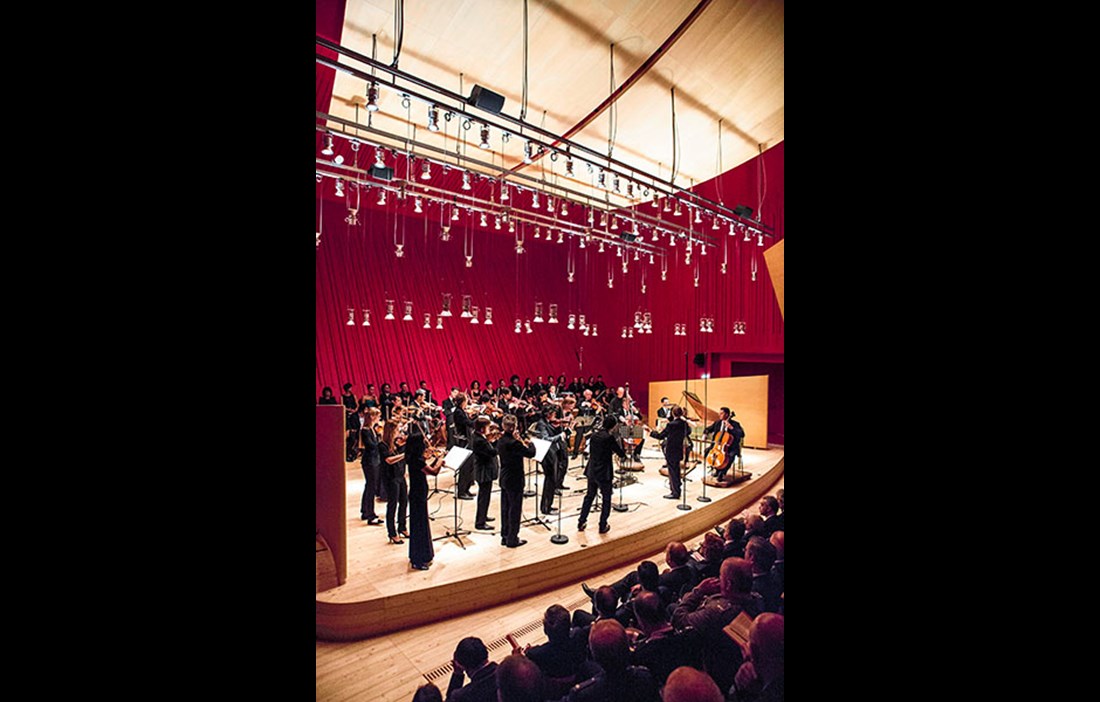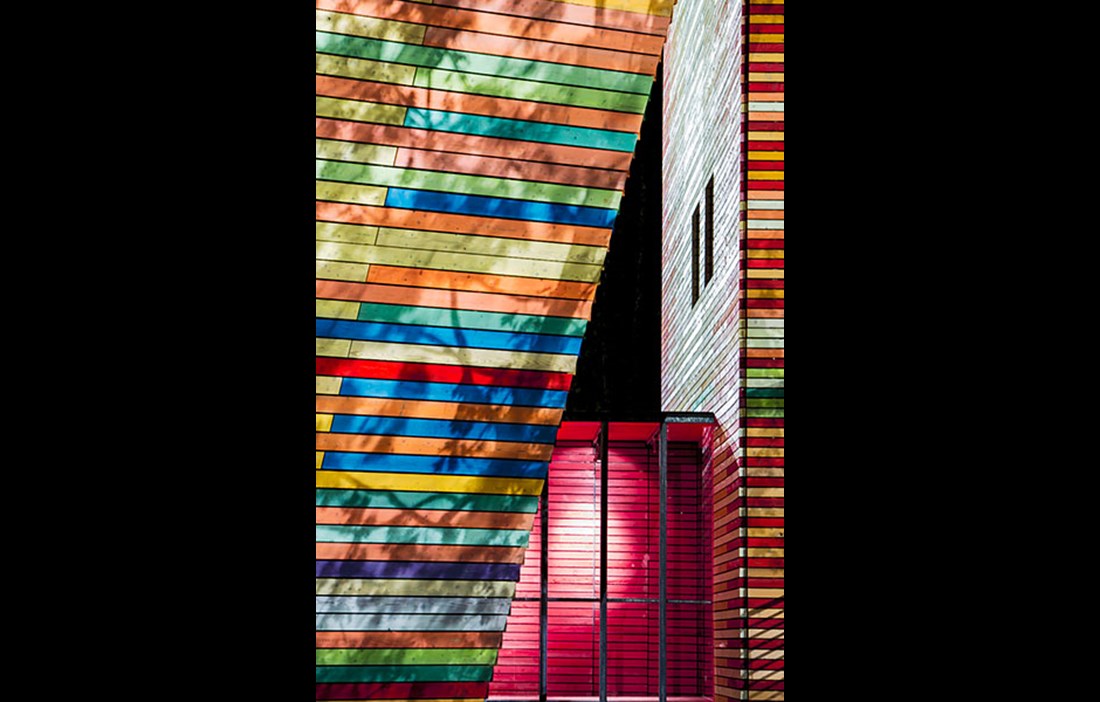VIOLIN MAKER ANTONIO Stradivarius took his secret to the grave. The mystery of the thousand or so instruments he had created, what made them sound so inimitably beautiful, disappeared with him when he was lowered into the earth one cold December day in 1737 in Cremona, Italy. Many copies of the instruments were made afterwards, several with the original inscription ‘Antonius Stradivarius Cremonensis Faciebat’. The intention was not to deceive purchasers. On the contrary. The inscription was a humble indication of the model that the instrument was inspired by. There was also no chance of mistaken identity. Everyone, violin makers and musicians, knew that no one in Italy – indeed anywhere in the world – could make a violin like the great maestro.
Just over 300 years after Stradivarius’s glory days, the medieval Italian town of L’Aquila was hit by an earthquake. 70,000 people were rendered homeless and large parts of the town were destroyed – including the concert hall, which was a severe blow for L’Aquila, whose musical heritage was an important part of the town’s identity. Naturally the intention is to restore the building in the long term, but this will be a protracted and complex process.
The solution was to build a temporary concert hall in the meantime. And so, three and a half years after the earthquake, the Auditorium del Parco, built like a modern Stradivarius, stands as an homage to the maestro, next-door to the castle. The concert hall’s meticulous and intelligent construction technique, the work of renowned architectural firm Renzo Piano Building Workshop (RPBW), emulates the craftsmanship of the classic 18th-century violins. The concert hall is also largely built in larch from the same forests of the Val di Fiemme valley where Stradivarius hand-picked the timber for his melodious instruments.
“Achieving perfect acoustics in the venue was one of our greatest challenges. We wanted to make the auditorium work like a musical instrument and it was therefore only natural to use wood throughout. We hung up larch panels inside the auditorium because of the material’s capacity to improve the acoustics. The special thing about larch is that it has no defects. It reproduces and amplifies sound perfectly,” explains Paolo Colonna, chief architect for the project at RPBW.
The building is also clad in larch on the exterior. The larch panelling is heat-treated to make the wood more resistant to wear in the form of wind and weather. Before installation, the panels were also treated with a wood preservative, similar to the hard wax used on wooden boats, to close the wood’s pores and protect against attack from fungi and mould. Before that, the timber was painted plank by plank, partly to create an aesthetic effect, but also to give each plank a colour code that reveals its length and thickness for easier assembly. The result was that all sides of the concert hall have their own pattern of colour, their own look, which creates a vibrant, light and visually interesting building.
IF THE FIRST IMPRESSION of Auditorium del Parco is the attractive colours, the second is the design. It looks like someone has been throwing dice with the three cubes that make up the concert hall, as if they landed randomly, leaning against each other. The two smaller cubes house the foyer (with cloakroom, box office and bar) and the dressing room for the musicians. The dressing room in turn has mobile modules that can be reconfigured from evening to evening, depending on how much space is needed for the male and female contingent of the musicians. The largest cube, containing the auditorium, intentionally leans forward as if it is about to tip over. However, there is a very good reason for this 30° angle: the part of the cube’s underside that tips forward creates a sloping area inside for 190 of the auditorium’s 238 seats. The other 48 seats are located on the other side of the stage. The lean of the cube, and thus the rake of the seating, is calculated to give the best possible experience of the music in the hall. All three cubes are made entirely in wood from the nearby province of Trentino. The choice of material was made chiefly for its acoustic properties, but there were other reasons too.
“It was important for us, when we took on this assignment, that construction work would go as smoothly as possibly. We wanted to minimise the impact on the townscape, and tried to avoid the place being a construction site for a long time. One reason why we used wood so widely was that it is easy to produce many of the structural components in advance, and this speeds up the construction process. Other reasons for using wood include how easy it is to take the structure apart and put it together again, which is perfect because this is a temporary building.”
The sustainability of wood was also important to RPBW. To emphasise the idea of sustainability, 90 new larch trees were planted around the site to represent the number of trees used in building the concert hall. But wood also has another property that can be extremely beneficial to a building here in the province of Abruzzo: wooden structures have a capacity to handle earthquakes very well. During a quake, the structure can move and then return to its original position without being damaged. Giving the concert hall a wooden frame therefore seemed like an obvious choice. Additional measures were also taken to ensure the safety of the building, and simply to be able to take it down if necessary, in the event of an earthquake. The focus was on thinking in modules and removable components as far as possible. The cubes are put together in a way that allows them to be separated from each other quite easily. The same goes for the cross laminated timber frame, whose internal and external panels can easily be taken down.
DESPITE ALL THE BENEFITS of wood, it was still going against convention to use the material so widely.
“Wood has never been an important building material in Italy. This is related to our history and the architecture that dominated during the time of the Roman Empire. But I believe we have to think differently in Italy and start using the material much more extensively. Partly because it is a sustainable material, but also because of all the seismic activity we have in this country.”
Suddenly introducing a brand new wooden building to L’Aquila, right next to the old medieval castle, therefore seemed like an interesting prospect. How would the locals react? RPBW resolved the issue by tackling the project with great sensitivity.
“The people here in the region are still living with unutterable suffering and trauma since the disaster. They lost so much and the Italian government has not reacted robustly enough to tackle the aftermath of the earthquake and all its problems. I believe the building has succeeded in gaining a place in the people’s hearts, not least because we discussed the design and maintained an active dialogue with many of the people in the town over the course of the project. It was important to understand their needs.”
A ‘piazza’ was created outside the concert hall, a square with a café where people strolling around the castle could sit and relax. The piazza also acts as an extension to the concert hall, where in summer people can enjoy outdoor performances and watch concerts on the big screens that are hung on the building on special occasions. The piazza has become a new meeting place and a way to tempt people back to a town that is still largely in ruins. To further involve the town in the construction of the temporary concert hall, 21 students from the town’s university were included in the project. The collaboration was so successful that RPBW has now decided to organise a similar project at all the architectural firm’s offices around the world.
THE COMBINATION OF SMART construction technology, sympathetic architects and – in the absence of the government – major financial support from the economically strong and autonomous province of Trentino made Auditorium del Parco a roaring success. Something to build on in a town whose self-confidence has been dealt a heavy blow.
“It feels like people really appreciate the concert hall. I attended the opening concerts and remember them vividly. There were several concerts, so that everyone in the town would be able to come. And still people queued from four in the morning to get tickets! What’s more, the orchestras that have played there have been very pleased. Maestro Claudio Abbado and his Mozart Orchestra rehearsed for four hours while I stood watching. Afterwards, he came up to me and said: ‘It’s a real pleasure to play here!’ That felt fantastic.”
And so, as the wind whispers through the newly planted larches around the concert hall, scientists continue to seek the answer to what gives Stradivarius violins their unique resonance. The instruments have recently been x-rayed to get closer to the truth. However so far, the secret remains safe in the cemetery in Cremona. And if violin maker Antoni Stradivarius is turning in his grave when he hears talk about yet another copy of his instrument – a somewhat larger and more colourful variant in the form of the Auditorium del Parco – it is no doubt just so he can hear the music a little better.
Text Erik Bredhe























